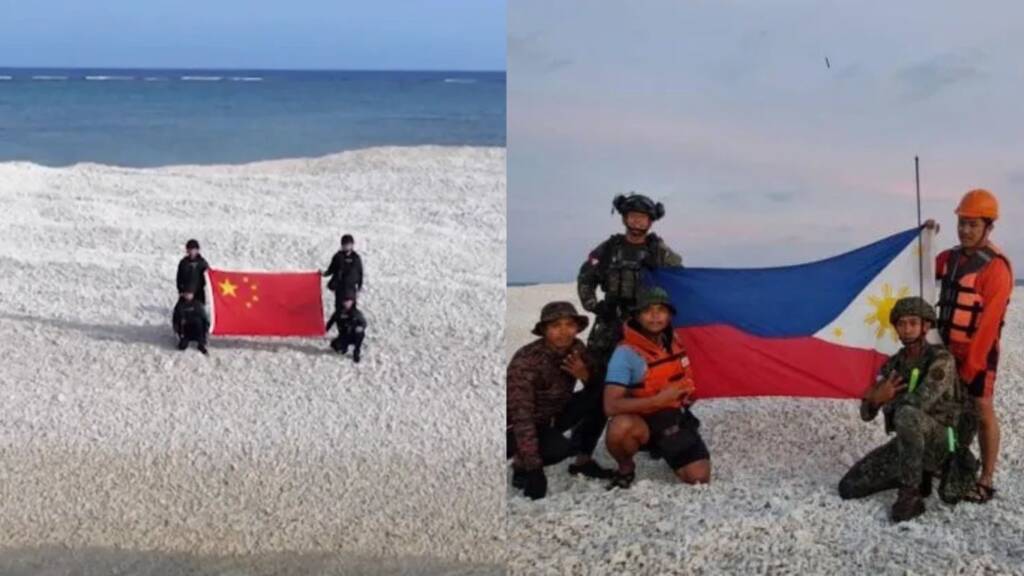Tensions between China and the Philippines are rising again in the South China Sea. Chinese coast guard forces have landed on Sandy Cay, a small disputed sandbar near Thitu Island, an important Philippine military base. The incident was first reported by the Financial Times and later confirmed by Chinese state media.
Chinese television, CCTV, said that the China Coast Guard “implemented maritime control and exercised sovereign jurisdiction” over Sandy Cay this month. Coast guard officers raised the Chinese national flag there. Photos published by Chinese media show Chinese officers standing with the flag on the sandbar.
This is the first time in years that China has officially claimed a new, previously unoccupied area in the South China Sea. Sandy Cay is located just a few kilometers from Thitu Island, also called Pag-asa Island by the Philippines. Thitu Island is home to a Philippine military base and a newly opened coast guard station.
The Chinese operation happened while the Philippines and the United States were preparing for Balikatan, their biggest annual joint military exercises. These drills are held close to the Spratly Islands, where Sandy Cay is located.
Even though Sandy Cay is very small — just over 200 square meters — it is very important. Under international law, controlling it gives a country a 12-mile territorial zone. This zone overlaps with waters around Thitu Island. The Philippines uses Thitu to watch Chinese movements in the South China Sea.
The Philippine Coast Guard has been improving Thitu Island’s runway and other facilities since late 2023. These upgrades are part of efforts to better defend Philippine claims in the area against China’s growing activities.
According to reports, the Chinese coast guard did not stay long after planting the flag. Philippine officials said Chinese personnel appeared to leave the reef soon after. There is no sign yet that China has built any permanent structures on Sandy Cay.
However, the act of planting the flag is seen as a serious provocation. The Global Times, a Chinese Communist Party newspaper, said Chinese forces also cleaned up trash from the sandbar and took videos of what they called “illegal activities” by Philippine forces.
China’s move adds to a long list of disputes between Beijing and Manila. China claims almost the entire South China Sea, despite international law saying otherwise. In 2016, the Permanent Court of Arbitration in The Hague ruled that China’s sweeping claims had no legal basis. The court also confirmed the Philippines’ rights over parts of the sea. China rejected the ruling and continues its activities.
In recent years, tensions have flared over other reefs and islands. Last year, China and the Philippines clashed over the Second Thomas Shoal, another disputed area inside the Philippines’ exclusive economic zone. Although they reached an agreement in July 2024 to ease tensions there, problems continue elsewhere.
The Philippines accuses China of increasing maritime aggression. Incidents include blocking Philippine patrols, using water cannons, and dangerous maneuvers at sea. China denies these accusations and blames the Philippines for stirring trouble.
The Sandy Cay incident shows that the South China Sea remains a dangerous hotspot. The proximity of Sandy Cay to Thitu Island makes the situation even more sensitive. Both countries are likely to increase patrols and military activity in the area.
The Balikatan exercises between the Philippines and the US are set to begin soon. They will focus on defending Philippine territory and responding to possible attacks at sea. With tensions already high, any small incident could quickly grow into a bigger crisis.
For now, Sandy Cay remains empty again. But China’s symbolic action has sent a clear message. The struggle for control of the South China Sea is far from over.
